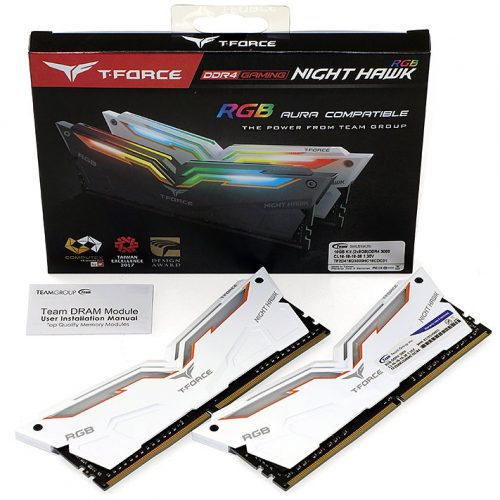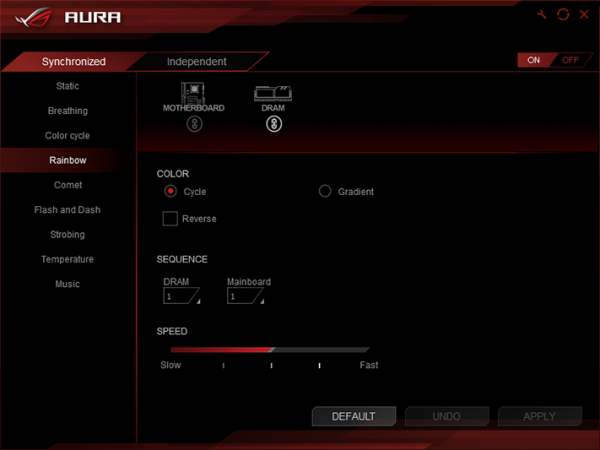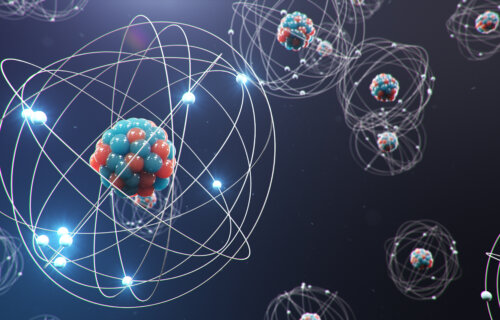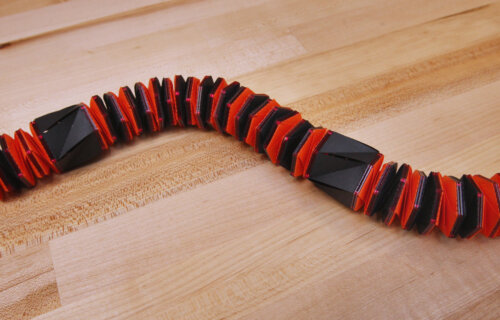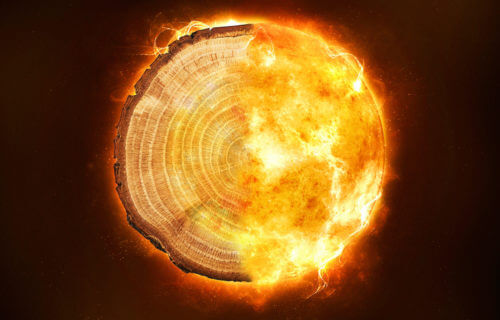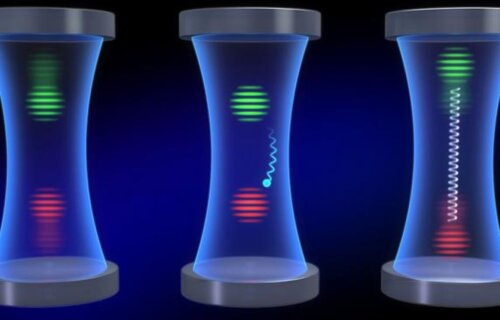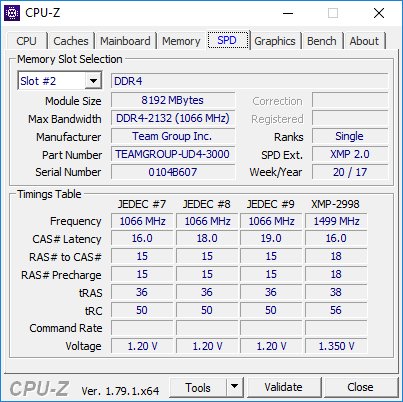
The T-Force sub-brand is alive and kicking at Team Group, and the firm is finally taking on its DRAM competitors in the RGB arena. Night Hawk RGB modules have been around a few weeks, but it wasn’t until recently that Asus published an update to its Aura software (available using Asus Aura-enabled motherboards) that could control the RGB features of these modules. A beta version of the Aura software was available for earlier reviews, but we prefer to use software to which all users have access.
The part number we received, TF2D416G3000HC16CDC01, comes in white, and runs at a DDR4-3000 CAS 16 as the name implies. Those timings are just a little relaxed by standards of the performance enthusiast market, where a cycle of latency for every 200 MHz of data rate (such as DDR4-3000 CAS 15) is quickly becoming the baseline.
The DDR4-3000 rating requires XMP mode to configure both its data rate and 16-18-18-38 timings at 1.35V. At 1.20V defaults, motherboards will configure these two 8GB modules at DDR4-2133 CAS 15. Even slower configurations are available within the SPD table to expand compatibility with troublesome platforms.
The Night Hawk RGB retail box includes two 53mm-tall (2.1”) modules and an installation manual. Also included, but not photographable, is Team Group’s Lifetime Warranty. You’ll simply have to imagine it (or click the link).
The Night Hawk RGB ships with its LEDs programmed to Rainbow mode. Team Group does not include RGB software, although users of Asus motherboards can load that company’s Aura software for some control over the lighting. While not as detailed as the settings of some of its competitors, we eventually got the modules to do what we wanted by happenstance after poking around the menu options for a while.
Comparison Products
The only set of competing RGB modules we had on hand were G.Skill’s DDR4-3600 four-DIMM set. All four modules are the same 8GB size and use the same single-sided configuration as those of the Night Hawk RGB being tested today, but four single-sided DIMMs have the performance advantage of providing the four ranks of addressable memory that our Kaby Lake test bed prefers.





